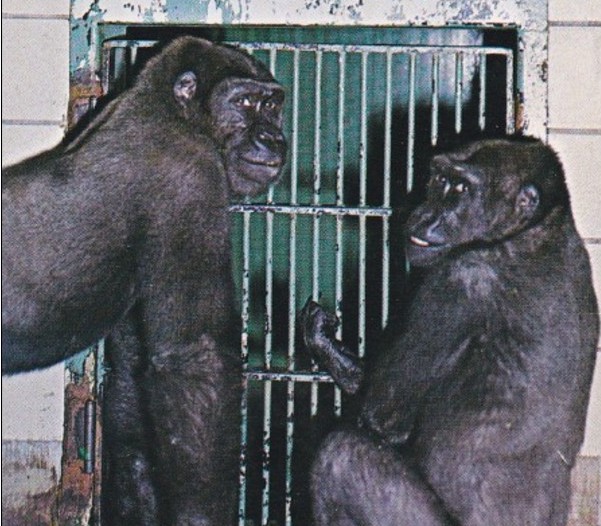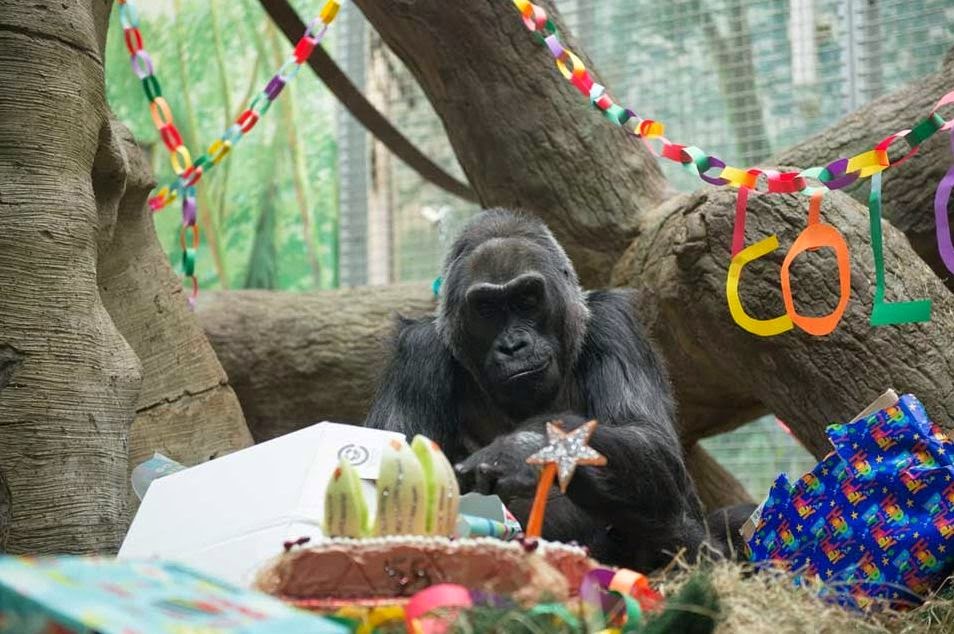This week we lost another great American. As far as people go, she was more likable than most of us, even though she was covered in hair and smelled like a zoo. In fairness to Colo, that was due to the fact that she lived in one. She was a lowland gorilla.
The loss of Colo is more than a loss to the Columbus Zoo in Ohio, it’s a loss to the world. She was the first gorilla born in captivity, and until her death, she was the oldest gorilla we know of.
While nothing lasts forever, people everywhere are in mourning for the loss of this special gorilla, but I’d like to take a moment to celebrate the life she lived. After all, she gave us so much of it.
Tough Beginning

(Baby Colo | source: washingtonpost.com)
The tale of Colo reads a little like the Truman Show, where a corporation owns the character played by Jim Carry. In the fictional dystopian story, his life plays out in a world where his every moment is on TV.
For Colo, life also started out tough. Her own mother rejected her before she even had a chance.
One morning in December of 1956, a zookeeper found Colo still in the amniotic sac, left for dead. That zookeeper rushed her, sac and all, to the zoo kitchen where he had to perform CPR to get her to breathe. It took some love and tenderness, but the zoo kept her alive.
Once she was stable, they raised her the only way people knew how to raise a baby; diapers and baby bottles. At first, they called her Cuddles, but after a naming contest, they renamed her Colo; a mashup of Columbus and Ohio.
Married Life

(source: delcampe.net)
Talk about your arranged marriages, zookeepers introduced Colo to a male gorilla at age two.His name was Bongo. He was only 19-months at the time, so it was all innocent.
The two of them spent roughly fifteen years together and had three offspring. Those babies produced 16 grand babies, 12 great-grand babies.
Colo was a tough girl to tie down. Later in life, she spent less time with Bongo. He passed in 1990, but their love lives on through the generations of gorillas at the zoo.
Old Age

(source: every-day-is-special.blogspot.com)
Colo recently turned 60, an unlikely year for gorillas to see. She’d outlived the last title-holder by five years. In the wild, gorillas don’t tend to live past age 40.
As Colo aged, her body suffered arthritis and even cancer. Zookeepers recently removed a lump from her arm. If the cancer spread, that may be what ended her life.
Like most of us, as she grew older, Colo grew curmudgeonly. She became more picky about her diet, spent more time alone. Eventually, zookeepers gave her a private enclosure, a retirement home of sorts. There, they were able to create special accommodations for her aging hands, give her playthings that would stimulate her to use her hands.

(source: fox8.com)
Colo’s contribution to the zoo is obvious, but she did so much more than what you see. She made the Ohio Zoo into one of the foremost experts on raising gorillas. The techniques they developed, the lessons they learned, they passed on to other zoos.
The draw to see Colo didn’t hurt the Zoo either. The Zoo commits to preserving gorillas in the wild as well. Colo better equipped them for that mission.
No doubt, we will miss Colo.

